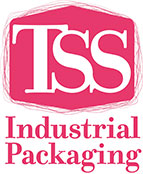Basis Weight: Weight per unit area. Differs from paper category to paper category.
Bleaching: A chemical process used to whiten and purify the pulp. Bleaching also adds to the sheet’s strength and durability.
Converting: The operation of treating, modifying, or otherwise manipulating the finished paper and paperboard so that it can be made into end-user products. A converter is a company that converts material into the finished product.
Crepe Sewing Tape: Non-adhesive crinkled strip of paper typically used in the end closure of sewn multi-wall bags.
Creping: The operation of crowding a wet sheet of paper on a roll to add flexibility and anti-slip properties.
Fiber: The slender, thread-like cellulose structures that forms the main part of a tree trunk, and once separated and suitably treated, cohere to form a sheet of paper.
Filler Cord: A cushioning medium introduced around the thread in needle holes so that the needle holes are sealed and the sack strengthened. Usually twisted soft yarn or twisted paper. (TSS only carries cotton filler cord.)
Paper: A homogeneous sheet formed by irregularly intervening cellulose fibers.
Paper Grade/Weight: Weight per 1000 sq. ft. of paper. The larger the weight, the denser the sheet; however, the larger the weight, the less footage per roll (or basis weight). The lower weight paper is less stiff and can run through the machine at a higher rate of speed.
Pull Tape: A non-adhesive paper product used as a sewing tape or in place of a filler cord.
Recycled Paper: Paper made with fiber that was obtained from recovered paper; secondary fiber. The majority of crepe tape is produced from recycled paper.
Slip Sheet: Sheet of material that is inserted between two surfaces to separate and protect them. Can be used in the place of pallet.
Stock: A term used to define pulp after mechanical and/or chemical treatment. A pulp ready to make paper.
Virgin Paper: Paper made with fiber that has never been used before in the manufacturing of paper or other products. Paper produced from virgin fiber is stronger than recycled paper and creates less chance of dusting.



